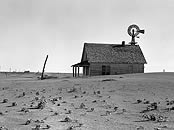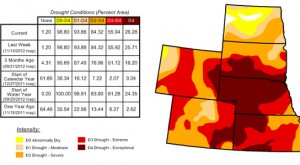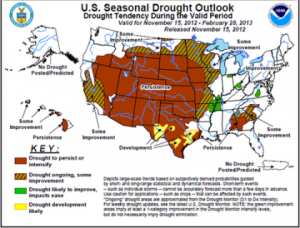Currently airing on PBS, the American public broadcaster, is the Ken Burns’ documentary, The Dust Bowl, describing the ecological disaster that swept through the U.S. Midwest in the 1930s, a combination of bad agricultural practices accompanied by a decade-long drought. The bad practices came about because of rising wheat prices after World War One and generous federal farm policies that led to a land grab with the plowing up of 5.2 million acres of Prairie grasslands for planting crops. But the boom didn’t last as wheat prices crashed and farmers compensated by planting even more to make up the lost income.
During the 1920s the Prairies enjoyed better than average rainfall but that too was not to last. A drought lasting eight years combined with the economics of the Depression to create a perfect economic and climatic storm – abandoned farms and 850 million tons of dry top soil, exposed and blown away in a series of dust storms that turned land from the Canadian Prairies to Texas and New Mexico into a semi-desert.

What saved the Mid-West? The return of rain in the early 1940s, World War Two demand for food crops, new farming techniques such as contour plowing to stop erosion, and the discovery of a natural underground water source, the ten-million-year-old Ogallala Aquifer.
Dust Bowl Warning Signs
Is there a chance that this could happen again?
Climate change, a depleted aquifer, and growing crops on marginally suitable land may bring about a return to those images of the 1930s lie the one above. That is, if we are not heedful of the warning signs.
Rising temperatures blasted the Mid-West farm belt in 2012. Persistent drought conditions covered much of the area. Dust storms reappeared in October of this year.
Tens of thousands of wells continued to pump out water from the Ogallala Aquifer which today is estimated to be 50% depleted.
Surface water sources such as lakes, streams and rivers reached record low water marks. Many ran dry exposing remnants of past sufferers of climate change on the Prairies.

One of my readers who calls his own blog, a Minnesota Farmer, recently described the persistent dryness in Southwestern Minnesota as “locked in.”
He states, “We’ve had no fall rains to recharge our soils here….and with December….our soils will be freezing soon. It’s going to be hard for the snows of winter to melt into our frozen winter soils, thus we will be waiting for spring rains if they come. The records say that there is only a 5% chance of a third dry year in a row, but we may be looking at the 5% if things do not change before planting in 2013. All we can do is wait.”
Today the two biggest corn producing states, Iowa and Kansas are reporting exceptional drought conditions over 75% of the former and 93.25% of the latter. Half of this year’s U.S. corn harvest was described as in poor shape compared to 20% in 2011. A third of the soybean harvest was described as poor or very poor. Winter wheat emergence this fall has been down dramatically from previous years.
What can farmers do to ensure no repeat of the Dust Bowl? New drought-resistant GMO crops have provided some relief. Better water conservation techniques may help as well. But there are no clear or easy answers.
A report released in January 2012, called Agriculture and Forestry in a Changing Climate: The Road Ahead, outlines the challenges ahead and promises a further report on adaptation strategies.
If these cycles of drought continue the “bread basket” that has been the North American Mid-west, may come to an end.

















I’ve done my best year after year to hold my soil in place, but I watch many of my neighbors working the ground too much and not keeping a good cover on it. It may take a return to dry conditions to get them to realize that conservation practices pay. Will we have another dust bowl, not likely, since the soils at the center of the dust bowl have mostly been returned to grass and there are more trees in these sensitive areas today. Still, too little rain and too much wind could get our farm ground blowing again. We have the tools to grow crops in dry conditions, and we’ll do our best, after all we have a hungry world to feed.
[…] from poor agricultural practices and a decade-long drought across the U.S. prairie states. I wrote about this historic event back then, a drought that lasted eight years and when combined with the Great Depression proved to be the […]
[…] warming is making drylands get drier. For the American Midwest, the great fear is a return to The Dust Bowl conditions of the 1930s that followed a period of above-average precipitation lasting nearly a […]